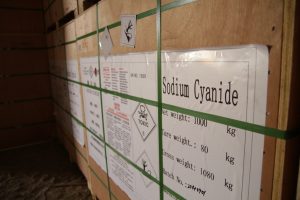
24 Mar The Case For Cyanide, Carbon And RECYN
 Cyanide is an excellent solvent, not only for non-refractory gold and silver, but also for some copper minerals. This has been seen as a negative attribute, especially for high copper ores where cyanide consumption is increased and it complicates the detox process. If the copper can be economically recovered, along with the cyanide, then being non-selective can be turned to an advantage.
Cyanide is an excellent solvent, not only for non-refractory gold and silver, but also for some copper minerals. This has been seen as a negative attribute, especially for high copper ores where cyanide consumption is increased and it complicates the detox process. If the copper can be economically recovered, along with the cyanide, then being non-selective can be turned to an advantage.
Gold/silver ores rely on a good solubility for both metals, which is favored by high cyanide levels, particularly for silver. Often cyanide levels are restricted to keep down consumption and detox costs, but this can also reduce metal recovery levels. By eliminating detox costs cyanide levels can be increased to better suit metal recovery economics.
The effort to find a replacement for cyanide has persisted for over 100 years. The hope has been to find a less problematic solvent, which is more publically acceptable.
No acceptable alternative has been found, failing due to being less efficient, less economic, or not environmentally better. It’s often a combination of all three deficiencies.
We can more easily accept the superior efficiency of cyanide if we solve the environmental concern and turn its non-selectivity to an advantage.
An adjunct to the non-selective “problem” of cyanide is the search for a selective adsorbent.
Carbon is partially selective and has a fairly complex elution process. The most common alternative is a gold-specific resin, but this is also not so applicable to gold/silver ores, or if copper is to be simultaneously recovered.
Resin is the best alternative if preg-robbing ores are processed. For most gold circuits, carbon is currently considered the best choice. It has a proven performance record and robust treatment methods.
Having chosen a non-selective solvent and partially selective adsorbent we are left with the challenge of cleaning up what is left solubilized in the tailings. Here the answer is more obvious, a non-selective resin.
The RECYN process not only absorbs all the solubilized metals, but has the added advantage of recovering free cyanide for reuse.



Sorry, the comment form is closed at this time.